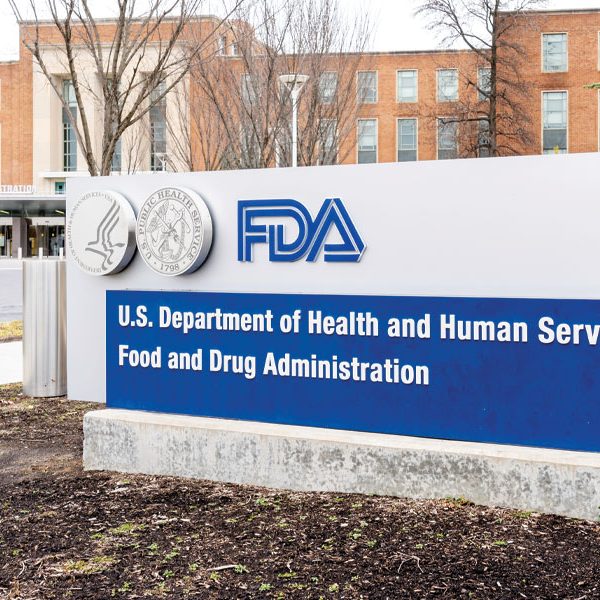Part 4: The Case for Better Health History Records – Overcoming Barriers to Medical Records Access

In Part 3 of this medical histories series, the focus centered on defining many of the barriers that clinical investigators face when attempting to procure adequate medical records for subject eligibility determination. While the list of potential issues appeared rather daunting, there are actually many approaches that can be taken to overcoming them. In this final part of the series, actions in overcoming these barriers are now addressed.
One of the first problems that clinical investigators may face when attempting to attain medical records is patient refusal to either provide them, or allow them to be collected. At the outset of such a refusal, any potential study subject should educated as to how important medical histories are to research studies.
Educating patients is paramount
Some of the key reasons for requiring medical histories have been presented in Parts 1 and 2 of this series, and these reasons should be shared with your patient. If it is a concern, patients should also be informed that they have a right to request and receive their medical records (themselves or provided directly to you), even if they owe the practitioner or firm a debt at the time of the request. The debt does not have to be paid as a condition of the records release under US, European Union, or Canadian law in addition to the laws of a majority of other regions and countries.
If a non-custodial parent can grant consent to clinical trial participation on behalf of a child under local or country-specific regulations, they should be aware that they also have medical records access rights – unless a court has ordered otherwise. Non-custodial parents should also be made aware of this right if they cannot grant consent to clinical trial participation, but the custodial parent has done so.
When a patient still will not agree to allow medical records to be shared with you, they should not be included in the clinical trial as their eligibility cannot be objectively confirmed.
Long-term patients and provider partnerships
Of course, patient permissions for medical record access may not be an issue if the patient has attended your practice for some time. Having information on record about, and an established connection with, their primary care physician, general practitioner, and/or treating specialists provides a clear opportunity to contact other providers to gather additional medical records and history as needed.
On the same token, enrolling subjects who have been treated within the same healthcare network allows access to many, if not all, of the necessary historical medical records. With medical records so readily available in these situations, consideration should be given to enrolling such patient populations only.
Additionally, professional relationships with other practitioners can also be taken under account when determining what patients to consider for clinical trials. In cases of established professional relationships with area clinics, general physicians, or even the specialists who treat the disease under study, it is possible to leverage these relationships to receive complete medical histories when the patient provides medical release permission.
Securing the medical record
When you have to ask a patient to secure medical records, giving them the knowledge and confidence they need to complete the task becomes very important.
If the patient is concerned about charges that they may incur, they should be educated about their rights to their own medical records. Patients can be provided a copy of their rights under HIPAA, a copy of the Department of Health and Human Services (DHHS) 2016 guidelines, or their rights under GDPR, all of which limit charges to patients in different ways.
To further navigate HIPAA, they can also be directed to the GetMyHealthData website, which is patient-focused and friendly.
In Canada, patients should be provided information garnered from their Province regarding Healthcare Information privacy, as many of these territorial regulations also provide caps on or additional requirements regarding charges. In other countries, patients should be directed to local websites or provided physical printed copies of their rights as appropriate.
Additionally, any of these websites, printed information, or both can be used for reference when the patient has a concern about third party access (i.e., someone picking up the medical records for them).
If a patient encounters difficulty with a given practitioner or firm, having a printed pamphlet of their rights may be useful to subsequently present to the refusing entity. To go a step further, consider providing patients with a model medical records release form to take to the necessary office or treatment facility. In this way, if the facility does not have their own process or form, this hurdle may be more easily overcome.
Under HIPAA in the US, a written request from the patient is not required if the records are to be used for the purpose of “treatment” of the patient. However, some states require a signed release for records and the patient should be prepared to sign for them.
In the case of mental health records, access may require additional permissions from the patient. In such instances, the patient will have to specifically allow the release of the mental health records. These records may not be given directly to the patient, but instead mailed to the clinical investigator’s office. The patient should be assured that mental health records are treated differently to protect them and ensure that the records are not misinterpreted. Medical records may not contain a diagnosis but, instead, impressions which are considered more subjective; this is normal for the mental health area.
Format of records
One of the more considerable hurdles faced by many clinical investigators is receiving electronic records in a readable format.
Under HIPAA and GDPR, records must be provided to patients in the format they choose, whether it be paper or specific electronic file format. Clinical investigators can consider having the patient advocate for the format that is required. Additionally, the method of record sharing can be directed by the patient (i.e., compact disc, fax, in person, email, or via patient portal from which print-outs can be made).
It should be noted that if the patient makes a record request electronically, the holder of the medical record is allowed to assume that electronic provision is acceptable, under GDPR guidelines.
Given that medical records have been migrating from being paper-based in most of the world, to being electronic, it should be expected that older records will be provided as paper or as scanned copies maintained electronically. If very old medical records are requested, it should also be expected that they may not be available without considerable effort from the holder if they have not been scanned and electronically housed. In such cases, under GDPR, the holder is not obligated to provide the requested records.
Re-screening and gaining approval
When historical medical records have been requested, but they are not yet available and the screening period is nearing the end, there are still actions that clinical investigators may take.
Even if it is not written in the protocol, a clinical investigator may contact the study sponsor and request to re-screen a potential subject. If re-screening is allowed, it is important to ensure that the IRB/IEC is aware of the change to the protocol and approves of the decision.
All sponsor approvals for re-screening should be maintained in the clinical trial records in such instances.
Additionally, a clinical investigator may request that the screening period be extended for a particular patient. Again, IRB/IEC review and approval of such a pre-planned deviation from the protocol is necessary, and documentation of that sponsor approval must be maintained with the clinical trial records.
Lack of availability or full information
When all of the above suggestions are exhausted, clinical investigators may still find themselves unable to receive the medical records they need to support eligibility determinations. If this occurs, the patient’s general practitioner should be contacted and asked to confirm inclusion criteria, and rule out exclusion criteria. The general practitioner should also be informed of the risks of participation in the clinical trial so they can share any conditions that may put the patient at a greater than expected risk.
As they may be expected to know the patient well, the general practitioner may also be asked if they would expect the patient to be compliant with the clinical trial if it demands completion of records (i.e. diaries), requires a great number of office visits, or requires participation in an extended follow-up period.
If a specialist has been consulted by the patient for a condition relevant to the clinical trial, including the disease under study or for exclusionary conditions, the specialist should also be asked to confirm if inclusion criteria are met and exclusion criteria are not met. As with the general practitioner, documentation from the specialist should be maintained in the subject records.
It is worth the effort
Considerable effort may be required to get historical medical records; however, this effort must be balanced against the risks of not enrolling the patient or worse – enrolling an ineligible or high-risk subject.
As discussed in Part 1 of this series, there can be serious repercussions in such cases, up to and including investigator debarment, requirements to repeat analyses, or the requirement to repeat an entire study. Given these potential negative impacts, each clinical investigator should take the time to develop best practices for obtaining medical records, both to ensure a successful clinical trial and their own success as an investigator. Beginning with the suggestions in this series, clinical investigators should now be more knowledgeable on this important requirement from regulatory auditors.
by Barbara Rusin
About the author
Barbara A. Rusin is Regulatory Compliance Manager at MMS, providing technical oversight and direction to a global regulatory team, spread across four continents. Prior to MMS, Barbara was a Bioresearch Monitoring Investigator and Biologics Specialist with the Food and Drug Administration’s (FDA) Detroit District office. Connect with Barbara on LinkedIn here.











